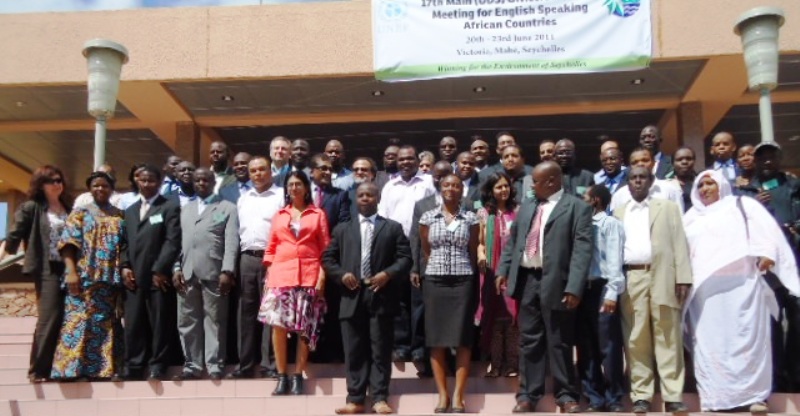30 years of the Montreal Protocol |18 September 2017
Caring for all life under the sun
Saturday September 16 marked the 30th Anniversary of the Montreal Protocol. The success of the Montreal Protocol shows what can be achieved by the mobilisation of international agencies, governments, businesses, communities and individuals by working together. Our positive actions can solve environmental problems and must be continued and sustained from the individual to the intergovernmental level.
The Montreal Protocol on Substances that Deplete the Ozone Layer is widely lauded as a huge environmental success and was designed to reduce the production and consumption of ozone depleting substances in order to reduce their abundance in the atmosphere, and thereby protect the earth’s fragile ozone Layer. The protocol was agreed on September 16, 1987 and entered into force on January 1, 1989.
A unique feature of the protocol is an adjustment provision that enables the Parties to the Protocol to respond quickly to new scientific information, in a bid to accelerate the reductions required on chemicals already covered by the Protocol. These adjustments are then automatically applicable to all countries that ratified the Protocol. Developing countries are given more time to comply with the phase out decisions, and also they receive funding from the Multilateral Fund of the Montreal Protocol to facilitate compliance with the Protocol’s provisions.
Seychelles’ success story after 24 years of ratification to the Montreal Protocol
In January 1993 Seychelles joined some 197 countries under the Montreal Protocol Umbrella, and in August 2002 Seychelles accepted and ratified the last of the Montreal Protocol Binding instruments which are the Beijing & Montreal Amendment. In 2000, Seychelles’ first legislation ‘The Environment Protection (Ozone) Regulations 2000 on the Protection of the Ozone Layer’ was approved, which controlled all importation of ChloroFluoro Carbons (CFCs) and being a Low Volume Consuming Country, 2007 was set as target year to phase-out all CFCs or compound of CFC-based equipments and refrigerant gas under the Montreal Protocol.
In 2005, two years before the target year, Seychelles achieved the target of being compliant with the Montreal Protocol. To maintain the zero consumption target, the Ozone Unit in the Ministry of Environment, Energy and Climate Change is constantly training its law enforcement officers (mostly custom officers) in the detection of illegal trade in Ozone Depleting Substances (ODS).
The next step is for Seychelles to be compliant with the Kigali Amendments which were agreed upon in October 2016, in Kigali, Rwanda. The Amendment was adopted in October 2016 to phase down powerful greenhouse gases hydrofluorocarbons (HFCs), which are frequently used as substitutes for ozone-depleting substances (ODSs). HFCs are climate-warming gases that have significant global warming potentials.
Following seven years of continuous consultations, Parties to the Montreal Protocol struck a landmark legally binding deal to reduce the emissions of powerful greenhouse gases in a move that could prevent up to 0.5 degrees Celsius of global warming by the end of this century, while continuing to protect the ozone layer. HFCs are man-made chemicals that are primarily used in air conditioning, refrigeration and foam insulation, and are powerful greenhouse gases that can be thousands of times more potent than carbon dioxide in contributing to climate change.
Seychelles as a small island developing state (Sids) is deeply vulnerable to climate change. We have been witnessing disastrous extremes weather events and prolonged droughts for the past ten years affecting our socio-economy base. We need to address climate change if we are to become a highly resilient country. The new deal includes specific targets and timetables to replace HFCs with more planet-friendly alternatives, provisions to prohibit or restrict countries that have ratified the protocol or its amendments from trading in controlled substances with states that are yet to ratify it, and an agreement by rich countries to help finance the transition of poor countries to alternative safer products.
The Kigali Amendment to the Montreal Protocol on Substances that Deplete the Ozone Layer could be the single largest real contribution the world has made so far towards keeping the global temperature rise “well below” 2 degrees Celsius, a target agreed at the Paris Climate Change conference in December 2015; this amendment is a huge step forward to achieving that target.
As pressure mounts on governments worldwide for less talk and more action to address climate change, the Kigali Amendment is indeed, a commendable move that adds momentum to a series of new global climate change agreements, including the Paris agreement which has officially entered into force on November 4, 2016.
Seychelles is expected to ratify the Kigali amendment before the end of this year.
Many countries are now considering using the Montreal Protocol regime to phase down HFCs. As a result, political commitment to managing HFCs under the Montreal Protocol could be one of the biggest climate change wins in the lead-up to the Bonn climate conference in November 2017. It will also be another strong victory for multilateral efforts to safeguard our environment.
On this International Day, the message of the Minister for Environment, Energy and Climate Change, Didier Dogley, is as follows: “ The Vienna Convention and its Montreal Protocol to protect the Ozone layer are universally hailed as one of the most effective and successful environmental agreements. Seychelles has been exemplary in achieving the targets that we have set ourselves although our consumption of chemicals that effects the ozone layer is low. We now need to apply ourselves to the task of elaborating the necessary legal instruments, which will lead to the abatement and ban of the consumption of chemicals listed in the Kigali Amendments that does not only depletes the Ozone layer but also induce climate change. Let us ensure that we protect our climate the way we have preserved the ozone layer."









